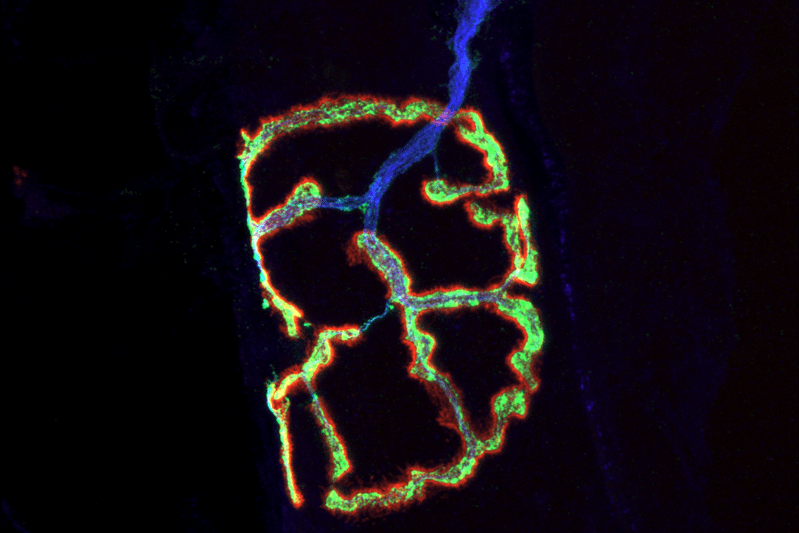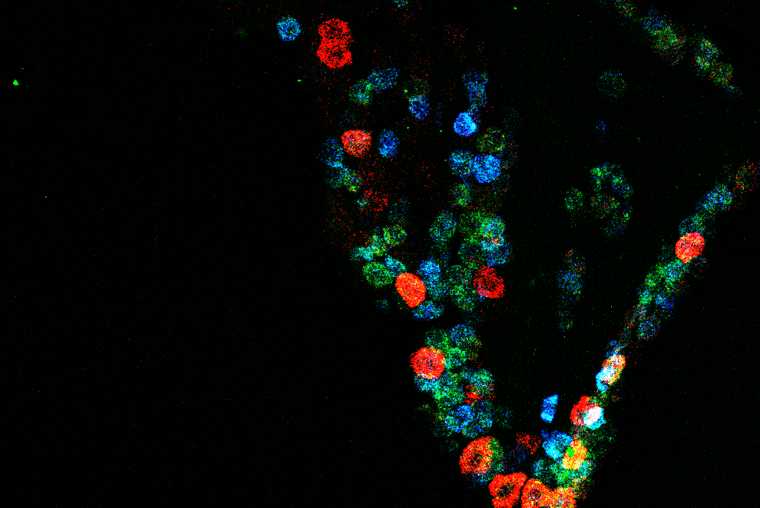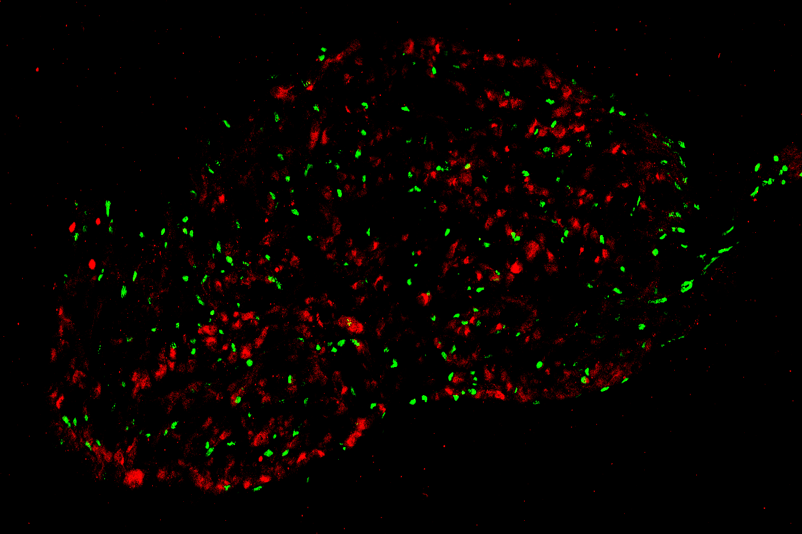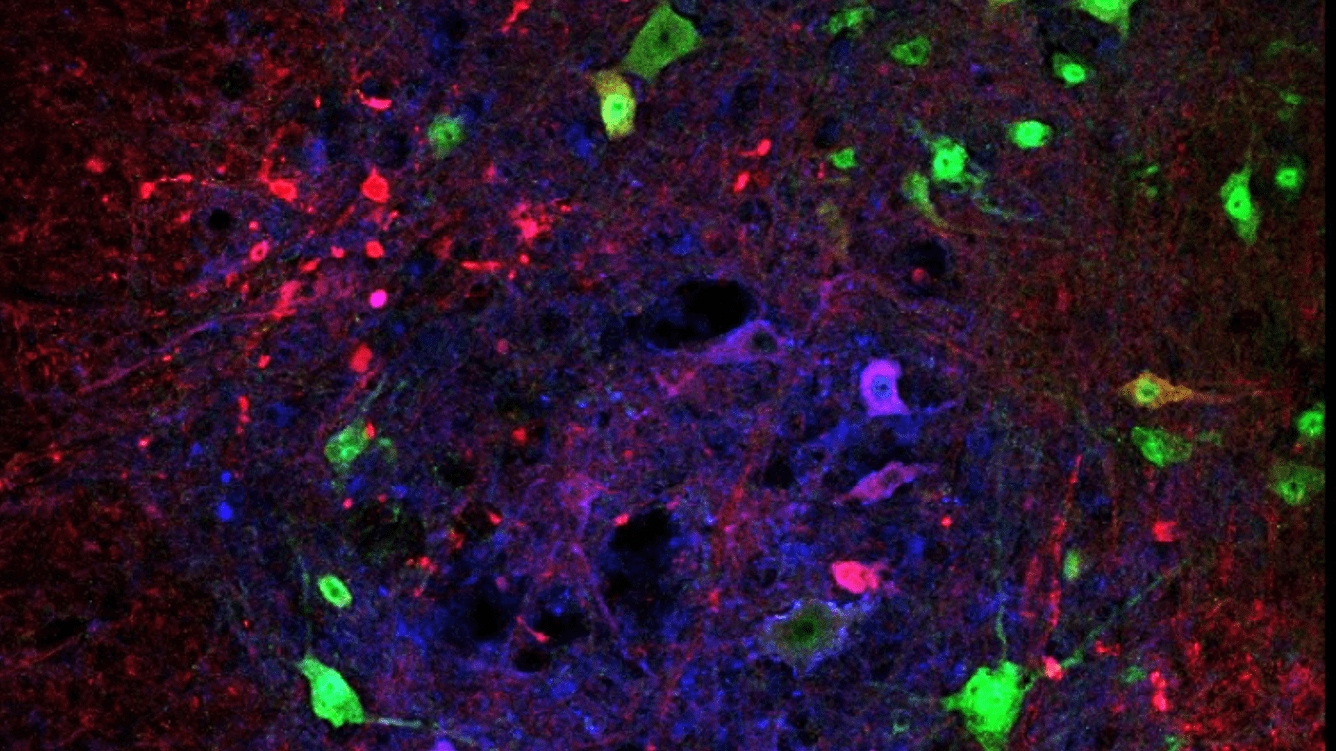
Amyotrophic Lateral Sclerosis (ALS)
The etiology of ALS is being investigated through the use of unbiased screens for neurodegeneration mechanisms in transgenic mice and human motor neurons differentiated from ALS patient-derived iPSCs.

Development of the peripheral taste system
The Pierchala lab is investigating cell fate specification of oral sensory neurons of the geniculate ganglion.

Mechanisms of Apoptosis
The Pierchala laboratory is investigating how death receptor complexes and neurotrophic factor receptors converge to regulate cell death and survival.
Research Team

Wesley Stansberry
Graduate Student

Catherine Kaminski, MS
Research Analyst/Lab Manager

Priya Shields
Research Analyst
Recent Publications
C.R. Donnelly, A. Kumari, L. Li, I. Vesela, R.M. Bradley, C.M. Mistretta and B.A. Pierchala. 2022. Probing the multimodal fungiform papilla: complex peripheral nerve endings of chorda tympani taste and mechanosensitive fibers before and after Hedgehog pathway inhibition. Cell Tissue Research. 387: 225-247. PMCID: PMC8821500. Selected for the cover image of this journal issue.
J.L. Shadrach, W.M. Stansberry, A.M. Milen, R.E. Ives, E.A. Fogarty, A. Antonellis and B.A. Pierchala. 2021. Translatomic analysis of regenerating and degenerating spinal motor neurons in injury and ALS. iScience. 24 (7): 102700. PMCID PMC8246596
T. Tang, C.R. Donnelly, A.A. Shah, R.M. Bradley, C.M. Mistretta and B.A. Pierchala. 2020. Cell non-autonomous requirement of p75 in the development of geniculate oral sensory neurons. Sci. Rep. 10 (1): 22117. PMCID: PMC7747618.
J.L. Shadrach and B.A. Pierchala. 2018. Semaphorin3A signaling is dispensible for motor axon reinnervation of the adult neuromuscular junction. eNeuro. 5: e0155. PMCID PMC5955010
C.R. Donnelly, N.A. Gabreski, M. Chowdury, E.B. Suh and B.A. Pierchala. 2018. Non-canonical Ret signaling augments p75-mediated cell death in developing sympathetic neurons. J. Cell Biology. 217: 3237-3253. PMID: 30018091
C.R. Donnelly, A.A. Shah, C.M. Mistretta, R.M. Bradley and B.A. Pierchala. 2017. Biphasic functions of the GDNF-Ret signaling pathway in chemosensory neuron development and diversification. Proc. Natl. Acad. Sci. USA (PNAS). 115: E516-E525. PMID 29282324.
Z. Chen,* C.R. Donnelly,* B. Dominguez, Y. Harada, W. Lin, A.S. Halim, T.G. Bengoechea, B.A. Pierchala# and K-F. Lee#. 2017. P75 is required for the establishment of postnatal sensory neuron diversity by potentiating Ret signaling. Cell Reports. 21: 707-720. PMID: 29045838. *These authors contributed equally. #Co-corresponding authors.
A.B. Wehner, H.B. Abdesselem, T.L. Dickendesher, F. Imai, Y. Yoshida, R.J. Giger and B.A. Pierchala. 2016. Semaphorin 3A is a retrograde cell death signal in developing sympathetic neurons. Development. 143: 1560-1570. PMID: 27143756



